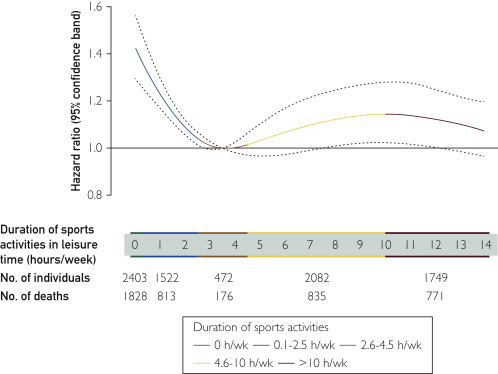
There are things you can do to get over your fear of the gym before you begin your workout. It is important to warm up before beginning any exercise. You will be able to prepare your body for exercise, and also lower your risk of injury. This will also reduce lactic acid buildup, which can lead to cramps. Remember to always stretch in the same place throughout your workout.
Don't over-extend yourself. You should always ask for a spotter before you try new exercises. Pushing yourself through your workout will only lead to more pain later. Instead, take a rest after your workout and treat yourself. You can always go back later and continue your workout. If you're a beginner, be sure to start early and increase the weights.

Do cardio. Cardiovascular exercise should be a part of your gym routine. You should alternate between your upper and lower bodies when you exercise. If you're new to working out, try to go for a half-hour session during the first week or two of your training. If your workout is becoming monotonous or repetitive, it's time you took a break and changed up your routine.
You should also consider using dumbbells to lift heavy weights. Dumbbell goblet pushups are named after the fact that you're holding a goblet. These exercises are great for building a strong body. The dumbbell Romanian deadlift is a cousin to the bodyweight squat. These exercises will help you build a strong and resilient body. Incorporate these techniques into your routine.
Begin with a few simple exercises if you're new to the gym. You can then focus on your upper back with dumbbells and weightlifts. You can build muscle mass in the lower body, so it is important to focus on reducing body fat. To get toned and lean, you will need to lift weights on both your upper and lower bodies. Aim for a sculpted upper body.

You can try different equipment if your not sure where to start. Cable machines are great for multiple muscle groups. Leg presses are great for building leg muscle. They target quads, hamstrings and glutes. The kettlebells are cannonball-shaped weights that have handles and are great for cardio and strength training.
After you finish your workout, do a warmup and a cool-down. It takes time for your body to cool down and warm up. There are many options for freeweights. One is TRX (Training with your own weight), which allows you use your body weight as a suspension system to lift. The treadmill is the most popular piece of equipment, and it allows you to adjust the intensity of your workout to your liking.
FAQ
Which are the top 10 foods you should eat?
These are the 10 best foods to try:
-
Avocados
-
Berries
-
Broccoli
-
Cauliflower
-
Eggs
-
Fish
-
Grains
-
Nuts
-
Oats
-
Salmon
What causes weight loss as we age?
How do you know if your bodyweight changes?
A person who has less body fat than their muscle mass will experience weight loss. This means that you must consume more calories than you use daily. Reduced activity is the leading cause of weight gain. Others include pregnancy, hormonal imbalances or certain medications. Weight gain is when there are more calories than muscle mass. This happens when people consume more calories than they burn during the day. Common reasons include overeating, increased physical activity, and hormonal changes.
The primary reason we lose weight is that we consume less calories than what we burn. Regular exercise increases metabolism, which means that we burn more calories per day. This does not necessarily mean that we will get thinner. What is more important is whether or not our body is losing or gaining weight. We will lose weight if we burn more calories than we consume. However, if we consume more calories than we burn, we end up storing them as extra fat.
As we age, our ability to move around is slower and we are less mobile. We also tend to consume less food than when we were younger. As a result, we gain weight. On the flipside, we are more muscular than we really need and appear bigger.
Without weighing yourself each week, there is no way to know how much weight you have lost. There are many different ways to measure your weight. You can check your waist size, your hips, your thighs, your arms, etc. Some people prefer using bathroom scales and others prefer tape measure.
To track your progress, weigh yourself once a week. Measure your waistline once per month. You can also take photos of your self every few months to track how far you've come.
You can also check your height online to find out how many pounds you have. You'd likely weigh 180 pounds if you were 5'10 tall and 180 pounds if you were 180lbs.
What are 5 ways to live a healthy lifestyle?
Living a healthy lifestyle includes eating right, exercising regularly, getting enough sleep, managing stress, and having fun! Good eating habits include avoiding processed foods, sugar, unhealthy fats, and avoiding junk food. Exercise is good for your body and muscles. Sleeping enough can improve memory and concentration. Stress management is a way to reduce anxiety levels and depression. Fun is key to staying young and vibrant.
How can I live my best life everyday?
The first step towards living your best life everyday is to find out what makes you happy. You can then work backwards once you know what makes YOU happy. You can also ask others how they live their best lives everyday.
You can also read books like "How to Live Your Best Life" by Dr. Wayne Dyer. He talks about finding happiness and fulfillment in all aspects of our lives.
What should my weight be for my age and height? BMI calculator & chart
Use a BMI calculator to determine how much weight is needed to lose. The range of a healthy BMI is between 18.5- 24.9. You should lose about 10 pounds each month if you are trying to lose weight. Enter your height and weight to calculate your BMI.
This BMI chart shows you if it is possible to identify if you are either overweight or obese.
How often should I exercise
A healthy lifestyle requires regular exercise. However, there isn't a set amount of time you must spend working out. Finding something you enjoy is key. Stick with it.
If you work out three times a week, then aim to complete 20-30 minutes of moderate intensity physical activity. Moderate intensity means you'll still be breathing hard after you've finished. This type workout burns about 300 calories.
Walk for at least 10 minutes four days a weeks if you prefer walking. Walking is easy on the joints and has low impact.
Jogging three times a week for 15 mins is enough if you want to run. Running is an excellent way to lose weight and tone your muscles.
Begin slowly if your are not used to working out. You can start with only 5 minutes per week of cardio. Gradually increase the duration until you reach your goal.
How do I find out what's best for me?
Your body is your best friend. Your body is the best judge of how much exercise, food and rest you should get. Your body will tell you what to do so that you don't go overboard. You must listen to your body to ensure you are healthy.
Statistics
- According to the Physical Activity Guidelines for Americans, we should strive for at least 150 minutes of moderate intensity activity each week (54Trusted Source Smoking, harmful use of drugs, and alcohol abuse can all seriously negatively affect your health. (healthline.com)
- WHO recommends consuming less than 5% of total energy intake for additional health benefits. (who.int)
- In both adults and children, the intake of free sugars should be reduced to less than 10% of total energy intake. (who.int)
- Extra virgin olive oil may benefit heart health, as people who consume it have a lower risk for dying from heart attacks and strokes according to some evidence (57Trusted Source (healthline.com)
External Links
How To
What does "vitamin" actually mean?
Vitamins are organic compounds that can be found in foods. Vitamins allow us to absorb nutrients from food. Vitamins cannot come from the body so food must provide them.
There are two types of vitamins: water soluble and fat soluble. Water-soluble vitamins dissolve in water easily. You can find vitamin C,B1 or thiamine, B2 or riboflavin and B3 or niacin, B3/niacin, B6/pyridoxine, folic Acid, biotin and pantothenic Acid as examples. The liver and fatty tissues are home to fat-soluble vitamins. Examples include vitamin D, E, K, A, and beta carotene.
Vitamins are classified based on their biological activity. There are eight main groups of vitamins.
-
A - Essential for healthy growth and health maintenance.
-
C – essential for proper nerve function.
-
D - essential for healthy bones, teeth, and gums.
-
E is required for good vision and reproduction.
-
K - Required for healthy nerves and muscles.
-
P - Vital for strong bones and teeth.
-
Q – aids digestion of iron and iron absorption
-
R - Red blood cells are made from red blood cells.
The recommended daily allowance of vitamins (RDA), varies according to age, gender, physical condition, and other factors. The U.S. Food and Drug Administration (FDA) sets the RDA values.
For adults aged 19 and older, the RDA for vitamin B is 400 micrograms daily. Because it is essential for the development of the fetus, pregnant women should consume 600 micrograms per daily. Children ages 1-8 require 900 micrograms per day. Infants under one year of age require 700 micrograms per day, but this amount decreases to 500 micrograms per day between 9 months and 12 months of age.
Children between the ages 1--18 years old who are overweight or obese require 800 micrograms per Day, while those who are overweight or obese need 1000 micrograms. To meet their nutritional needs, children underweight and obese require 1200 micrograms a day.
Children between 4 and 8 years old with anemia will need 2200 micrograms daily of vitamin C.
2000 micrograms are required daily for good health in adults over 50. Mothers who are pregnant, nursing, or have a high nutrient need will require 3000 micrograms a day.
Adults over 70 require 1500 micrograms each day, since they lose around 10% of their muscle mass every decade.
Women who are pregnant, nursing or breastfeeding need more than the RDA. Pregnant mothers need 4000 micrograms per daily during pregnancy and 2500 after giving birth. Breastfeeding mothers need 5000 micrograms per day when breast milk is being produced.